The eLearning products driven by AI shift higher education from ineffective “one-size-fits-all” pattern to highly personalized and adaptive learning, improving students' experience and attractiveness of the university or college. This post will give you an insight on how to reduce a summer melt, increase enrollment and graduation rates, and make your campus smart and safe. Keep on reading to find out how AI resolves challenges in higher education.
After implementing AI, Georgia State University reported a 21,4% reduction in summer melt and 3,3% higher enrollment rate, resulting in 3 million dollars of tuition revenue. Colleges and universities get from 26 to 35% of revenue from tuition and fees. The greatest challenges that heavily cut their revenue are high dropout rates, summer melt, and ineffective “one-size-fits-all” education. Stakes are too high not to consider AI as a way to reduce costs and improve educational efficiency. Even though the benefits are obvious, only 41% of the institutions have an AI strategy. So the institutions who implement Artificial Intelligence in education first will get a competitive advantage.
AI-enabled software to improve enrollment & retention, exam proctoring, and campus security
Colleges and universities increasingly rely on AI algorithms for engaging prospective students, building personalized learning paths, offloading time-consuming administrative and academic tasks, and even creating a safe campus. And here are the tools designed for these goals:
- AI-enabled tool for student enrollment aimed to lower summer melt and raise the enrollment rate.
- AI-powered prediction tool for increasing students' retention to identify what students are at risk to drop out and timely support them.
- AI-powered learner performance progress tracking tool to find students’ knowledge gaps and quickly follow up.
- AI-enabled exam proctoring tool to monitor students during remote online tests.
- AI-based tool for creating a secure campus to guarantee students’ security and data privacy.
1. AI-enabled engagement tool for student enrollment
86% of college presidents say that enrollment numbers are at the top of their most pressing issues.
The impact of COVID-19 backs up the concern:
- 45% of students report they are not emotionally ready to enroll.
- 30% report their inability to afford it.
The use of AI tools leads to enrollment going up and costs going down.
A remarkable use case comes from Georgia State University.
The university uses the AI chatbot to proactively send personalized reminders and messages.
 admithub.com
admithub.com
An AI-powered chatbot also answers questions and guides students through a university's admissions and enrollment processes.
- it informs prospective students about financial aid programs from the university (e.g. grants, scholarships, loans);
- and also answers common questions about deadlines, documents, etc.
The AI-powered chatbot communicates with students through the text messaging app on their cell phones.
An AI chatbot gathers a knowledge database based on students’ conversations. After getting a question, a bot responds in seconds. When a bot doesn’t know an answer, the question goes to a human. Analyzing human answers, the AI adds new data to the knowledge database and learns this way. As a result, the chatbot can handle an increasing number of questions without human input.
Another example of using AI in higher education is the AI-powered re-enrollment platform used at the Northern Vermont University.
It’s used to engage students who have previously dropped out but think about completing their education.
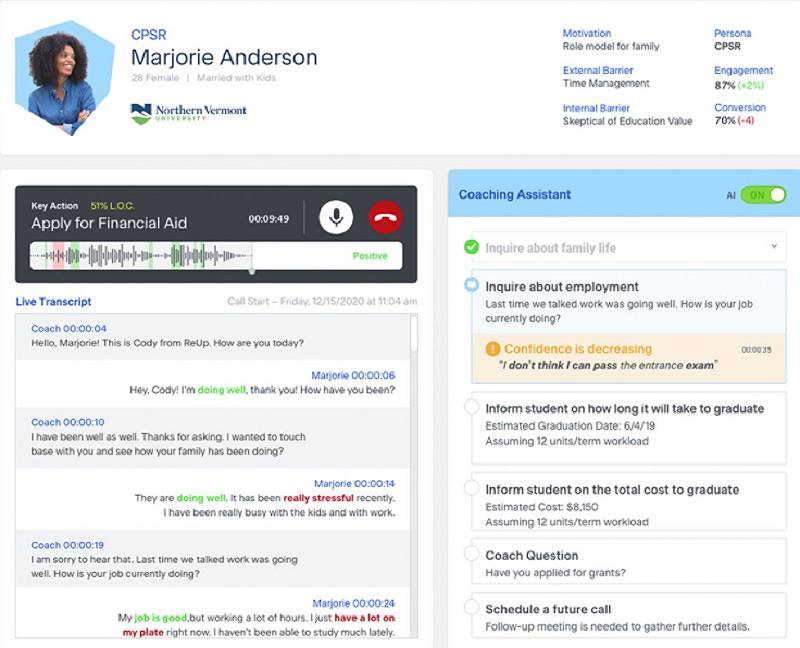
The software records a voice call made by a coach. NLP converts the speech into text. Then AI analyzes the conversation and especially the sentiment, making predictions about the engagement rate of a person.
To understand the sentiment, AI looks for specific nouns or verbs as well as positive or negative words, the frequency of these words to derive the overall tone.
As a result, a personalized profile about each prospective student is created. It includes recommendations for future conversations, such as informing about the graduation period and cost or reminding of applying for grants.
Based on the analysis of the conversations, predictive analytics forecast their chances to enroll and retain.
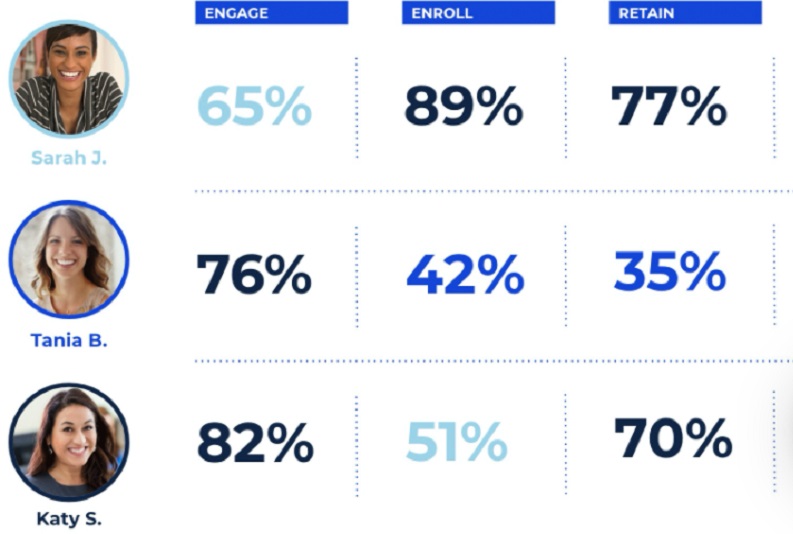 reupeducation.com
reupeducation.com
2. AI-powered prediction tool for increasing students' retention
The AI-based predictive tool analyzes academic, nonacademic, and operational data to identify students who are at risk to drop out.
Using predictive analytics, the University of South Florida raised its retention rate to 91% and the six-year graduation rate from 68% to 75%.
To increase the retention rate, the predictive tool uses all pre-matriculation data, integrated with the data from the Learning Management System (LMS), the Student Information System (SIS), an online registration system, finance and HR systems.
Based on these data, AI software anticipates what a student's average score for the first semester is going to be. If the model predicts 3.6 GPA, and a student receives 2.6 instead, that indicates that educators’ support and intervention are recommended.
The same prediction model improves the graduation rate, with the only difference that an AI-powered prediction tool uses records and data retrieved from all the previous semesters.
 beacon.io
beacon.io
3. AI-powered learner performance progress tracking tool
AI-powered student performance tracking software analyzes the learning performance of every student based on their grades and competencies, and provides educators with an intuitive report.
To receive information about student's performance and their grades, the software aggregates data from LMS and grading systems.
All the gathered grades are available in a single assessment dashboard. The educators are able to monitor the performance progress of the entire cohort or every student individually. Also, the system flags the students at risk, allowing educators to follow up quickly.
To analyze students’ competencies, educators need to gather and rate all the competencies that need to be mastered till graduation. AI parses these data to create a competency map.
A competency map shows what knowledge gaps a student has, which allows educators to detect and resolve the issue as early as possible. The corners of the competency “web” show the maximum level of competencies mastering. Also, the competency map allows tracking the progress over time comparing the student performance during the current year (the current level of mastered competencies is shown in green) with the previous period (shown in blue).
4. AI-powered exam proctoring software
The goal of AI in exam proctoring is to detect suspicious behavior during the test. Especially during remote testing, when a proctor cannot control in person how each student behaves.
The program records test-taker's activity through their computer’s camera, microphone, and web browser. The software validates a student's identity using facial recognition or keystroke analysis. It can also scan a room to ensure the student is alone if it’s required.
Colleges and universities opt for hybrid models that couple live remote human proctors with AI proctoring intervention in cases of suspicious behaviors, cheating, or the necessity of aid to a student.
The AI software captures compromising events, highlights session issues, analyzes the test results, and provides reports. A human proctor sees all the information in real time, including incidents detected by AI, and can react according to the situation.
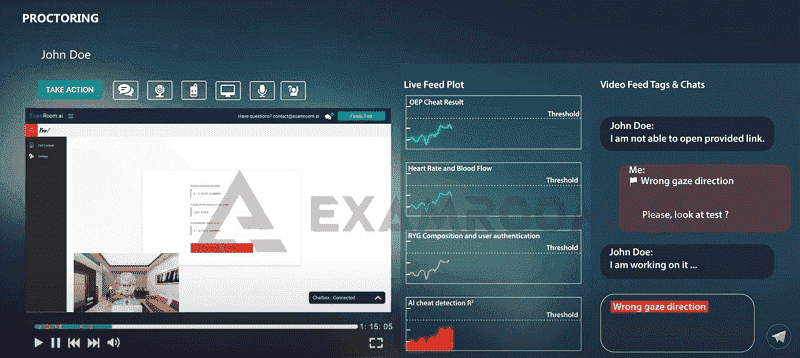
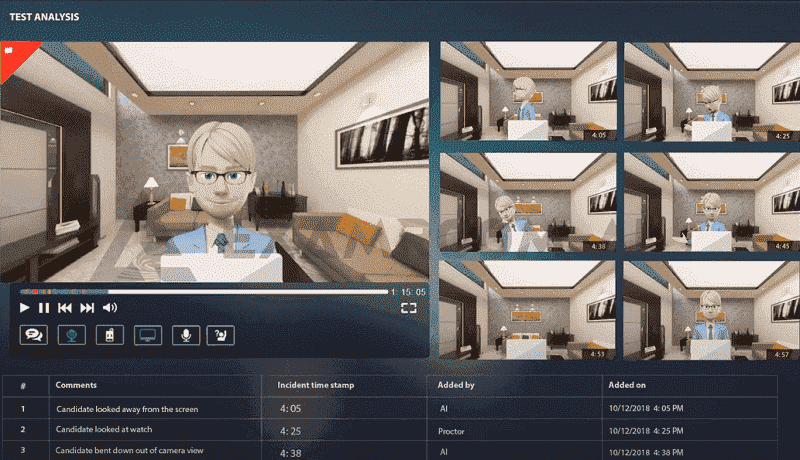 examroom.ai
examroom.ai
5. AI-based tool for secure campus
Phishing and ransomware remain key campus threats. Why? Because in colleges and universities, there is a lot of personally identifiable information and intellectual property.
AI can identify networking traffic, assess what “normal” looks like on a university network and do it at a larger scale that humans can accomplish.
For example, if a faculty member normally arrives at 8 a.m. and works until 7 p.m. and then maybe logs on at 9 p.m. from home, you wouldn’t expect that individual to be up at 3 a.m. connecting from China. AI can monitor those patterns to finddeviation.
An AI-driven network security monitoring software uses a combination of supervised machine learning to study the actions of analysts from the IT team. It learns not only to detect deviations, but also the attributes within the deviation event that influenced the analysts’ actions. Based on what it learns, the AI provides recommendations to the analysts.
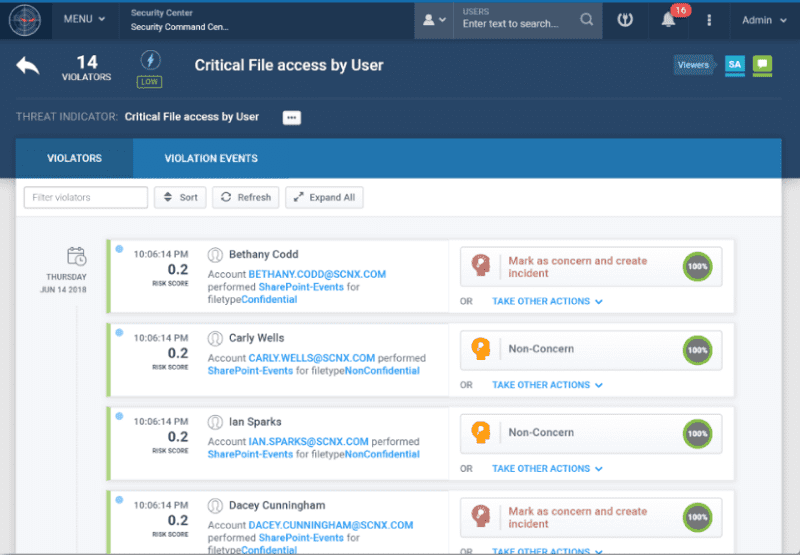 securonix.com
securonix.com
Another real threat is an active-shooter-on-campus. New technologies can help security officials anticipate crisis events and mitigate potential threats to students, staff and property.
Through the use of HD cameras, featuring built-in artificial intelligence and deep learning technologies, colleges and universities can recognize faces and guns, and identify car plates.
The AI-powered video surveillance identifies unauthorized entries, prevents thefts and break-ins, protects perimeter indoor and outdoor, monitors vehicle access.
So it doesn’t require constant monitoring by humans.
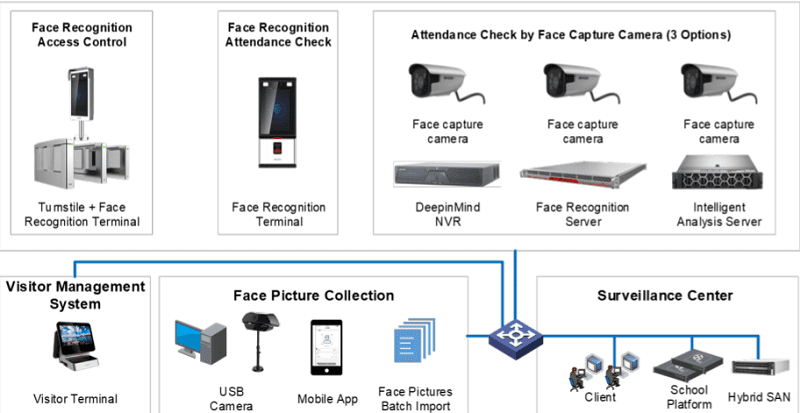 hikvision.com
hikvision.com
As security teams collect information in the AI-powered security platform over time, they start to identify trends (by comparing the recognised events with the risk matrix) and direct their staff to respond accordingly.
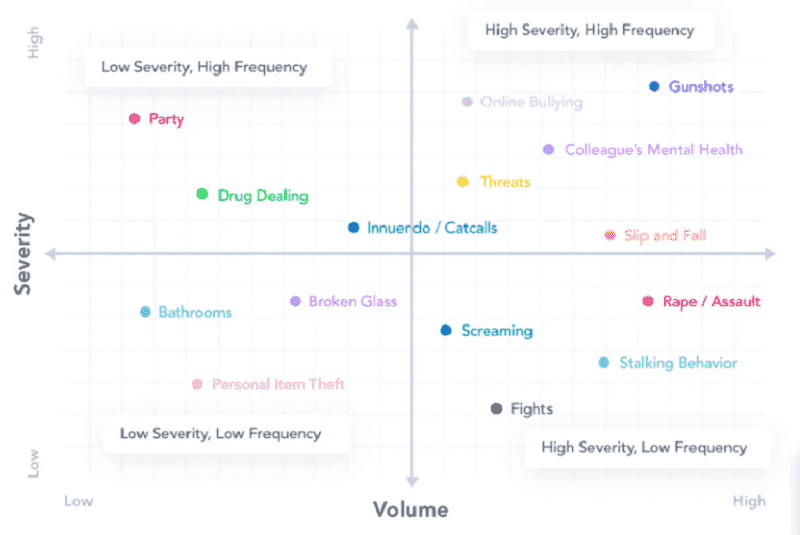 livesafemobile.com
livesafemobile.com
AI-enabled software to improve students’ outcomes and prepare them for future career
Digital transformation in education brings visible positive effects in a short time.
94% of colleges and universities report the improvement in student experience,
67% manage to meet the needs of the future workforce using up-to-date technologies, including Artificial Intelligence.
Here are the tools that favor improving students’ learning experience and prepare them for future career:
- AI-powered tool for students’ 24/7 support and timely aid to instantly answer common questions, to help adapt to a complexity of a college or university and help with financial issues.
- AI-enabled tool for creating a personalized learning path to master the domain knowledge and fill in the knowledge gaps quickly and effectively.
- AI-based tool for career preparation to align students to future workforce needs and even find them a job.
1. AI-powered tool for students’ support and timely aid
Colleges and universities use AI to answer routine students’ questions, schedule their tasks and activities, remind them about important events, notify them about loans, and even recommend courses based on how students with similar data profiles performed in the past.
A perfect use case of an AI automation tool for higher education is "Jill Watson," an AI-powered teaching assistant at Georgia Tech University.
Developed by Ashok Goel, who launched an AI course in the university, it was supposed to help him during the deployment of the new course and provide students with immediate answers without human intervention.
When students asked some common questions about the learning process, timing, projects, the AI assistant Jill responded fast and anytime unlike human assistants who may be busy or offline.

AI software can also provide proactive personalized assistance, which includes sending reminders, giving individual insights about courses or campus life, providing learning support, etc.
For example, the AI chatbot for education Genie automatically creates a checklist for exam preparation based on a student’s schedule.
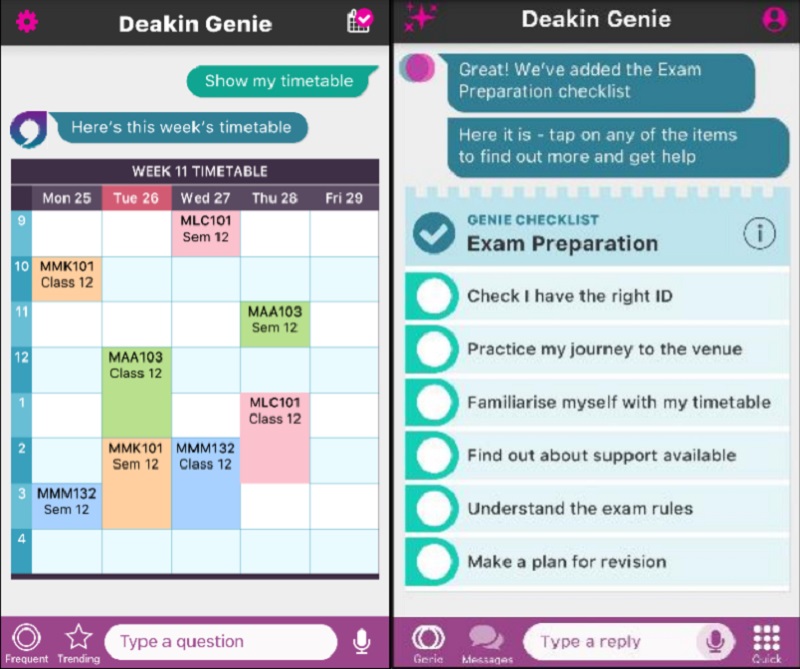
Another application of AI for supporting students is just-in-time financial aid. Colleges and universities can use data about students to give them microloans or advances to get to the end of the semester and not drop out.
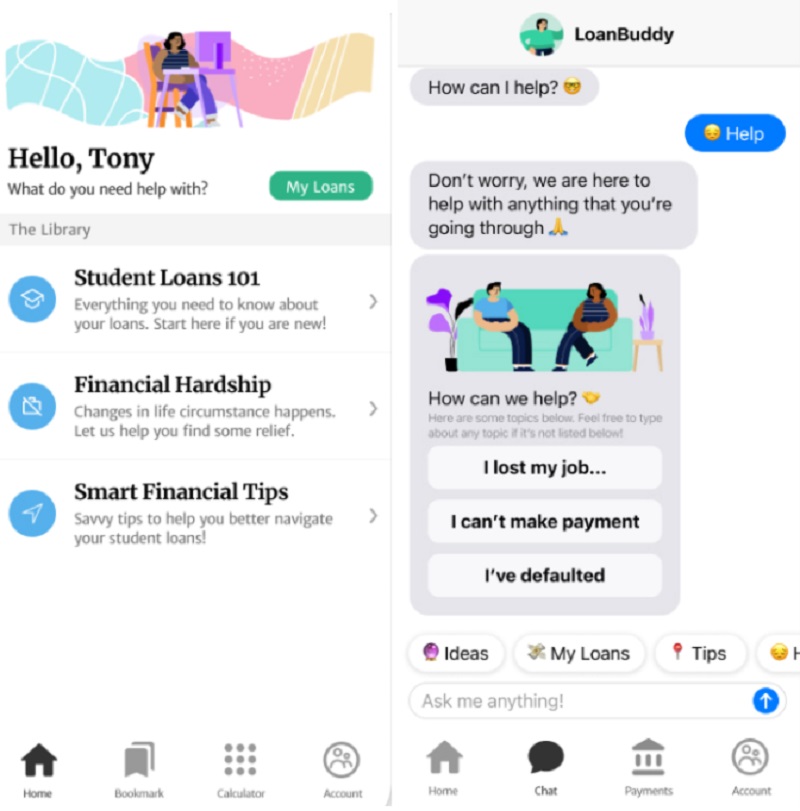 tonywang.page
tonywang.page
2. AI-enabled tool for creating a personalized learning path
To build a personalized learning path, an AI-powered platform usually starts from a knowledge check.
It’s not a predefined series of questions. Every next question depends on a student’s previous answer. Thus, questions’ difficulty maintains on the low level if a student answers mostly wrong, and goes more and more difficult if a student gives all correct answers.
Once the current level of knowledge is determined, AI builds a personalized learning path that starts from the most ready-to-learn topic.
When going through a learning path, students get suggestions as to where they have gone wrong if the answer is incorrect.
They can also see a detailed explanation and even the term dictionary.
The AI-based platform reassesses students approximately every 20 topics and at least 5 hours in the learning path with knowledge checks to see what topic they’ve mastered. It’s a fully automated process that happens without teachers’ intervention.
The knowledge check will go over the topics students have recently learned. If a student does well, these topics will move to the mastered category. The topics where a student still makes many mistakes will be added to the learning path to be reviewed again.
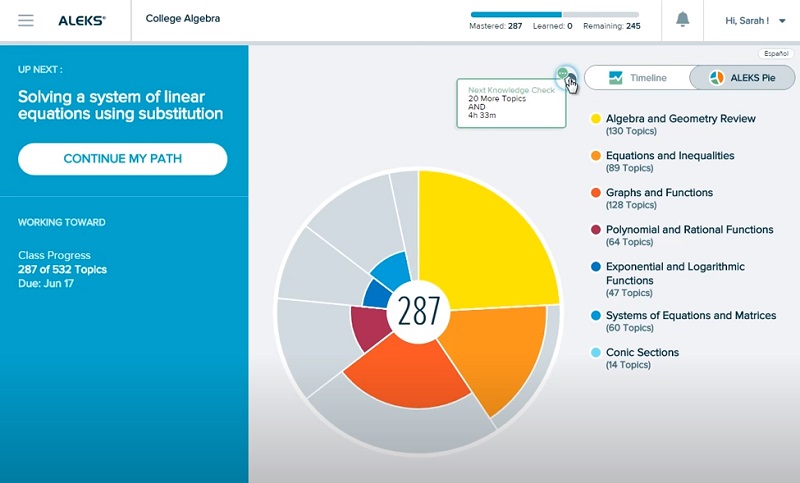

 aleks.com
aleks.com
3. AI-based tool for career preparation
Colleges and universities leverage AI technology to align students’ skills with workforce needs.
Technology companies, such as IBM and Microsoft, are piloting AI-based platforms and career advisors that can be used by institutions to provide customized insights and recommendations to help alumni pursue their career goals.
To get started, a student’s profile automatically fills with skills data based on the CV, related experiences or student’s assessment of their professional skills. Students can validate any of the automatically suggested skills and add additional skills that they believe they have.
The AI-powered career assistant maps skills to corresponding roles and then calculates job matches and career paths.
If certain skills needed for applying for a position lack, a student can use recommended learning materials to master these skills.
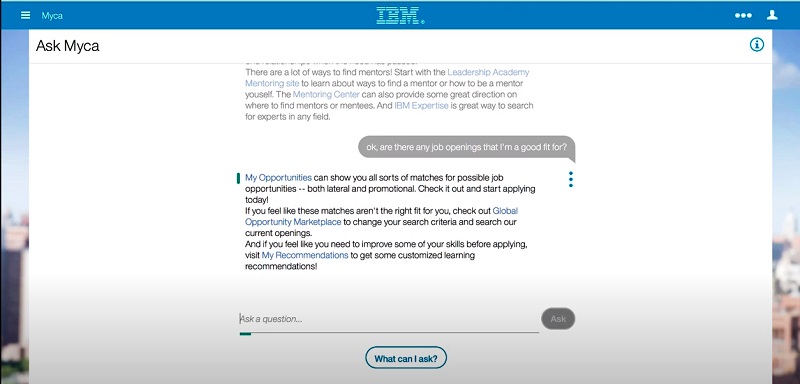
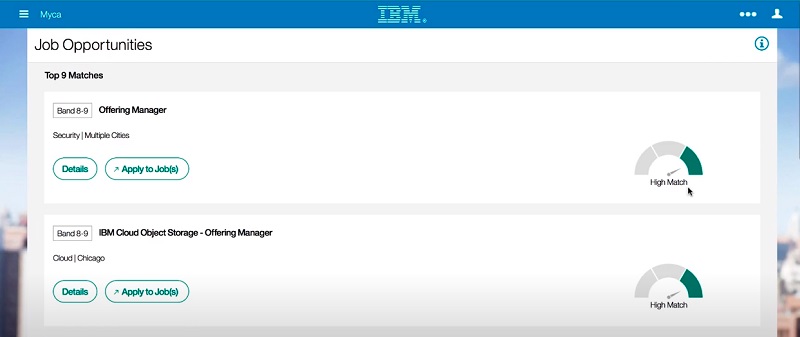
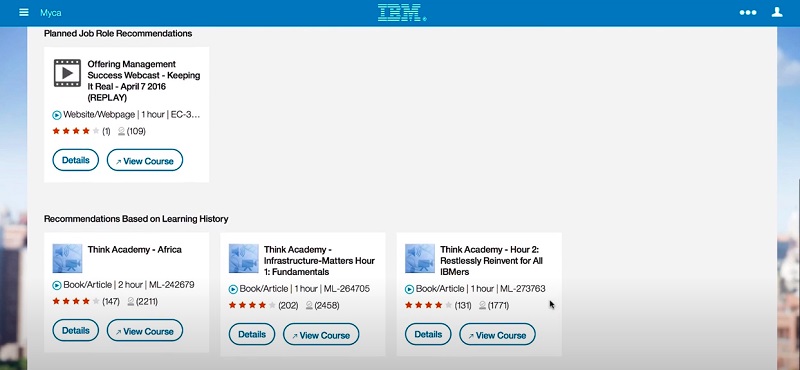
Interested in one of the AI-driven tools for colleges and universities? We know how to implement them in your learning environment. Talk with an expert to learn more!
Rate this article
Recommended posts
Portfolio


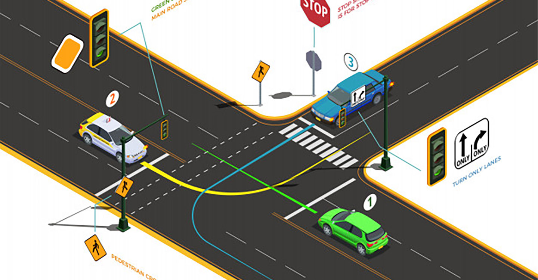
Our Clients' Feedback






















.png)
.jpg)
.jpg)
.jpg)
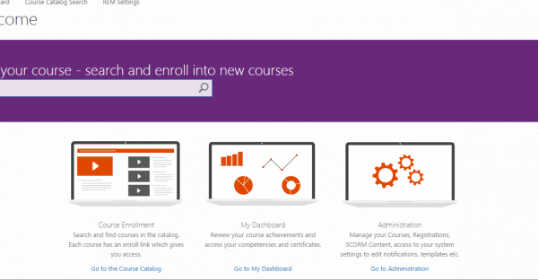


















Belitsoft has been the driving force behind several of our software development projects within the last few years. This company demonstrates high professionalism in their work approach. They have continuously proved to be ready to go the extra mile. We are very happy with Belitsoft, and in a position to strongly recommend them for software development and support as a most reliable and fully transparent partner focused on long term business relationships.
Global Head of Commercial Development L&D at Technicolor